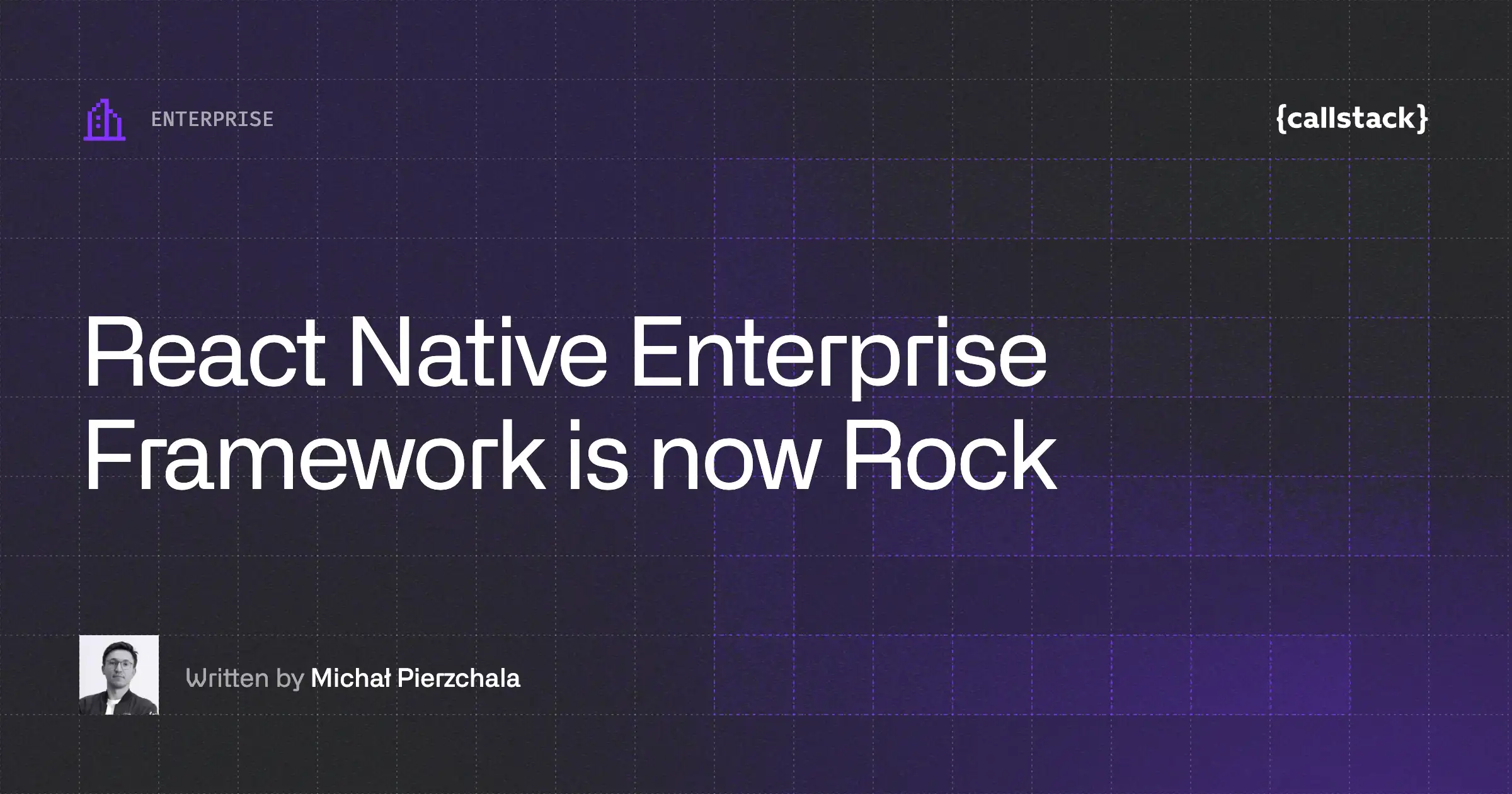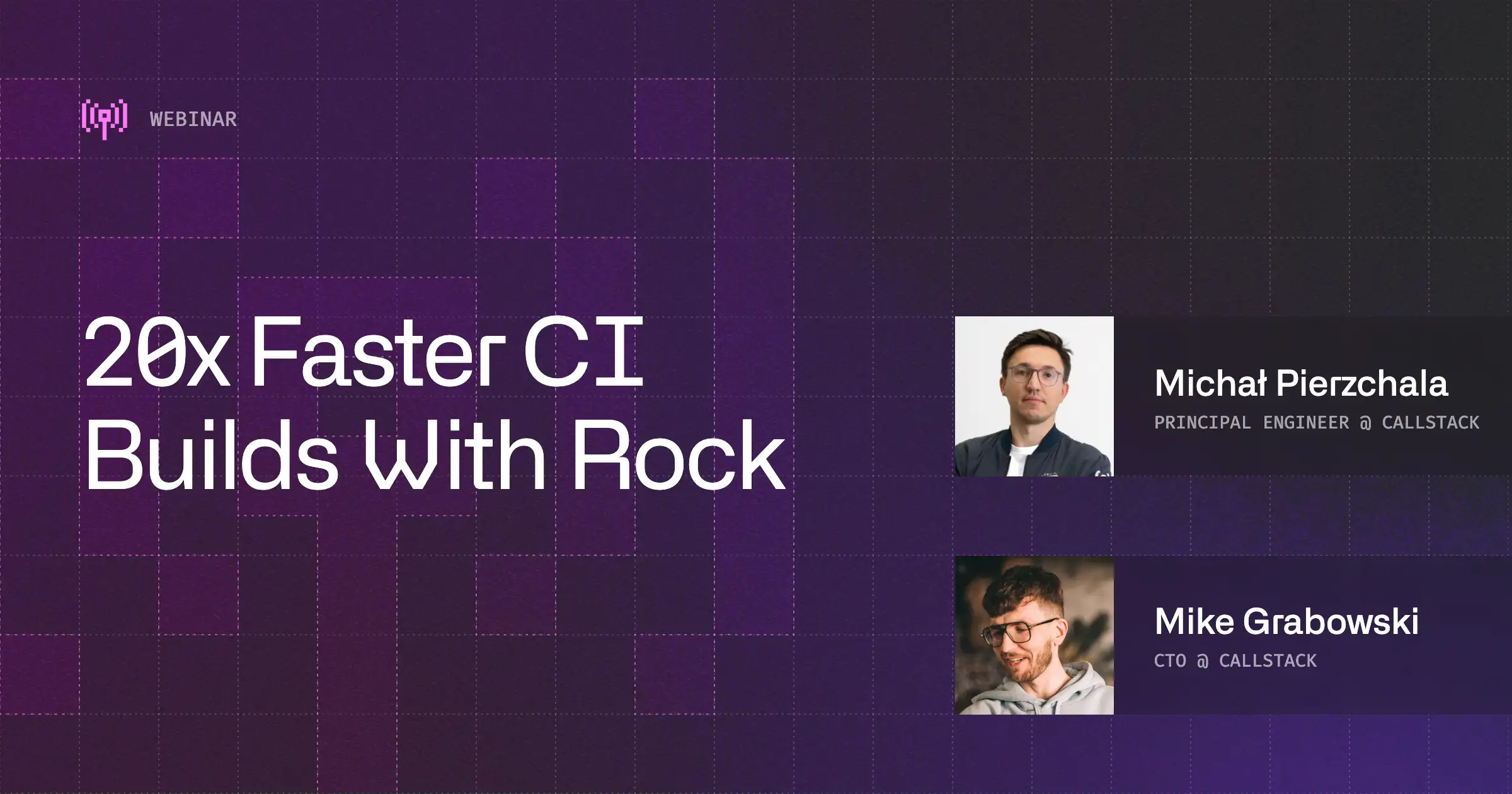What if you could skip most of your mobile app’s native builds, without cutting corners? In this episode of React Universe On Air, we discuss a framework that’s transforming how large-scale teams develop with React Native. Spoiler alert: it cut native build times from 35 minutes to under 4 on one enterprise project.
Real teams, real pain points, real results
Host Ola Desmurs-Linczewska talks to Michał Pierzchała, Principal Engineer at Callstack and the driving force behind Rock. Alongside him is Łukasz Chludziński, who tested the framework hands-on in a real enterprise project. Together, they unpack how Rock was created, why it exists, and how it’s helping large teams streamline their pipelines and ship faster with confidence.
How Rock tackles real enterprise problems
Built for apps too complex for Expo and too custom for basic React Native CLI setups, Rock offers modular tooling tailored for teams juggling monorepos, branded variants, and legacy code. In this episode, the team shares how it’s already being adopted incrementally in production environments and the kind of results it delivers.
Here’s what they break down:
- Build times slashed: One project’s test pipeline dropped from ~35 minutes to 3–4 minutes thanks to native build caching.
- CI-native caching: Smart fingerprinting detects whether a native build is needed, saving compute time and unblocking PRs.
- Incremental adoption: Rock can be added to just one pipeline at first—no need for full migration.
- Modular, plugin-based design: Works with Metro, Re.Pack, GitHub Actions, and more—custom setups are welcome.
- Brownfield integration made easy: Use iOS and Android plugins to drop compiled React Native bundles into existing native apps without CocoaPods or Gradle rewrites.
- Improved dev/QA collaboration: Developers and QA engineers can download prebuilt artifacts and skip local builds altogether.
Michał also reflects on the framework’s roadmap, from its CLI-first interface to eventual support for TV platforms, desktop targets, and becoming a recognized official React Native framework alongside Expo.
Learn more about Rock and connect with the people behind it
- Ola Desmurs-Linczewska on X, Bluesky, and GitHub
- Łukasz Chludziński on X and GitHub
- Michał Pierzchała on X and GitHub
- Learn more about Rock
- Rock documentation
- Rock on GitHub
Learn more about
Enterprise
Here's everything we published recently on this topic.
We can help you move
it forward!
At Callstack, we work with companies big and small, pushing React Native everyday.
Quality Assurance
Combine automated and manual testing with CI/CD integration to catch issues early and deliver reliable React Native releases.
Scalability Engineering
Design and validate React Native architectures that scale-supporting high traffic, modular teams, and long-term performance.
Monitoring & Observability
Enable production-grade monitoring and observability for React Native apps with real-time insights and alerts.
Migration to React Native
Plan and execute a migration from native or hybrid stacks to React Native with minimal disruption and clear technical direction.













